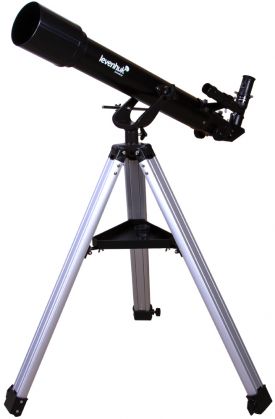Telescope design
 A telescope is a magnifying tool that allows us to explore space. It consists of optical and mechanical parts. The first one is an optical tube and installed accessories that participate in forming an image. The second one is a mount and a tripod. These elements are necessary for pointing the telescope to astronomy objects. You can find a general telescope assembly diagram in any reference book as well as online.
A telescope is a magnifying tool that allows us to explore space. It consists of optical and mechanical parts. The first one is an optical tube and installed accessories that participate in forming an image. The second one is a mount and a tripod. These elements are necessary for pointing the telescope to astronomy objects. You can find a general telescope assembly diagram in any reference book as well as online.
The design of the optical tube is of great interest as it allows us to observe all the beauties of space. Depending on the optical design, telescopes are divided into three types: lens (refractors), mirror (reflectors) and mirror-lens (catadioptrics). Let’s talk about each type in detail.
Telescope assembly diagram: design of optical tubes of different types
Refractors are telescopes that create an image with the help of an objective lens and an eyepiece. They were invented in 1609 by Galileo Galilei. Telescope design has since undergone many changes, of course, but the base design has remained the same. Refractors are perfect for studying the planets and the Moon but they often suffer from chromatic aberrations – color halos that appear around bright objects. Therefore, additional achromatic or apochromatic lenses are installed in good refractors. Unfortunately, this affects the cost of the optical tools. A quality refractor is always an expensive refractor.
Reflectors are telescopes that gather light with a spherical or parabolic mirror. The reflected light gets in a different smaller mirror and redirects outside the optical tube – to the eyepiece node. This lets us see a magnified picture of the night sky. Such a telescope design allows minimizing chromatic aberrations and achieving a bright and sharp image of even remote and dim astronomy objects. The most common mirror telescope is the Newtonian reflector.
The catadioptics have installed mirrors and lenses. In these telescopes, the main spherical mirror forms the image, and a special correcting concave-convex lens enhances the image quality. The main advantages of catadioptrics: affordable price, small size and weight. The disadvantages are a long thermal stabilization time and not very high aperture (compared to reflectors, for example).
Each optical design is divided into subtypes. The main idea of the telescope design remains the same, but the optical elements are placed differently. Each optical telescope design has advantages and disadvantages, and that is why when choosing a model you should build on the type of observations you are planning to perform. A refractor will show the best image when performing terrestrial and planetary observations; reflectors are great to observe deep space objects, and a mirror-lens telescope would be a great choice for countryside observations. There are no bad and good telescopes; there are appropriate and not appropriate tools for solving your tasks.
If you do not know what telescope you prefer, we recommend that you contact our shop assistants. Call, write, and visit our online stores and we will gladly help you choose a telescope.
Any reproduction of the material for public publication in any information medium and in any format is prohibited. You can refer to this article with active link to eu.levenhuk.com.
The manufacturer reserves the right to make changes to the pricing, product range and specifications or discontinue products without prior notice.


